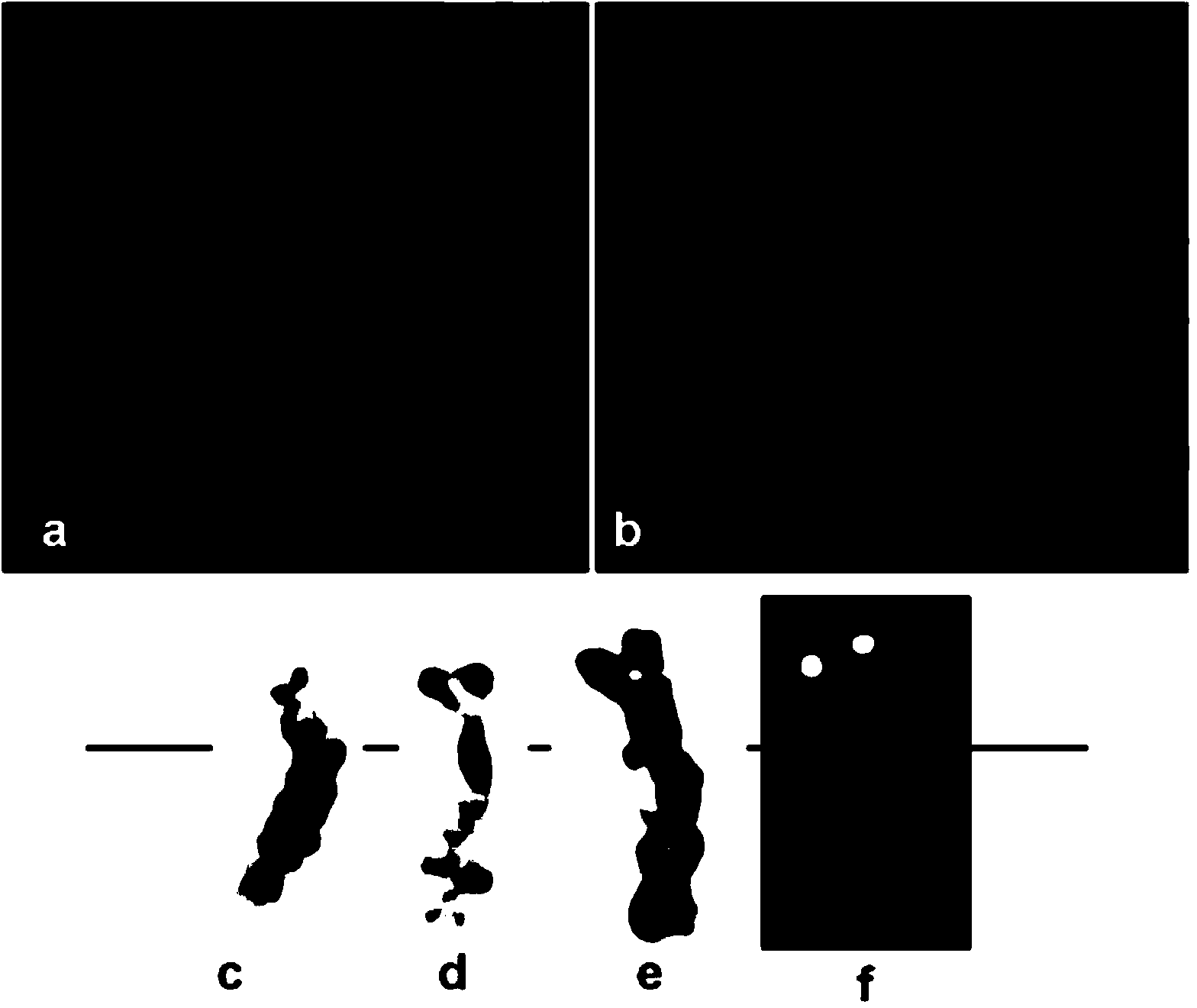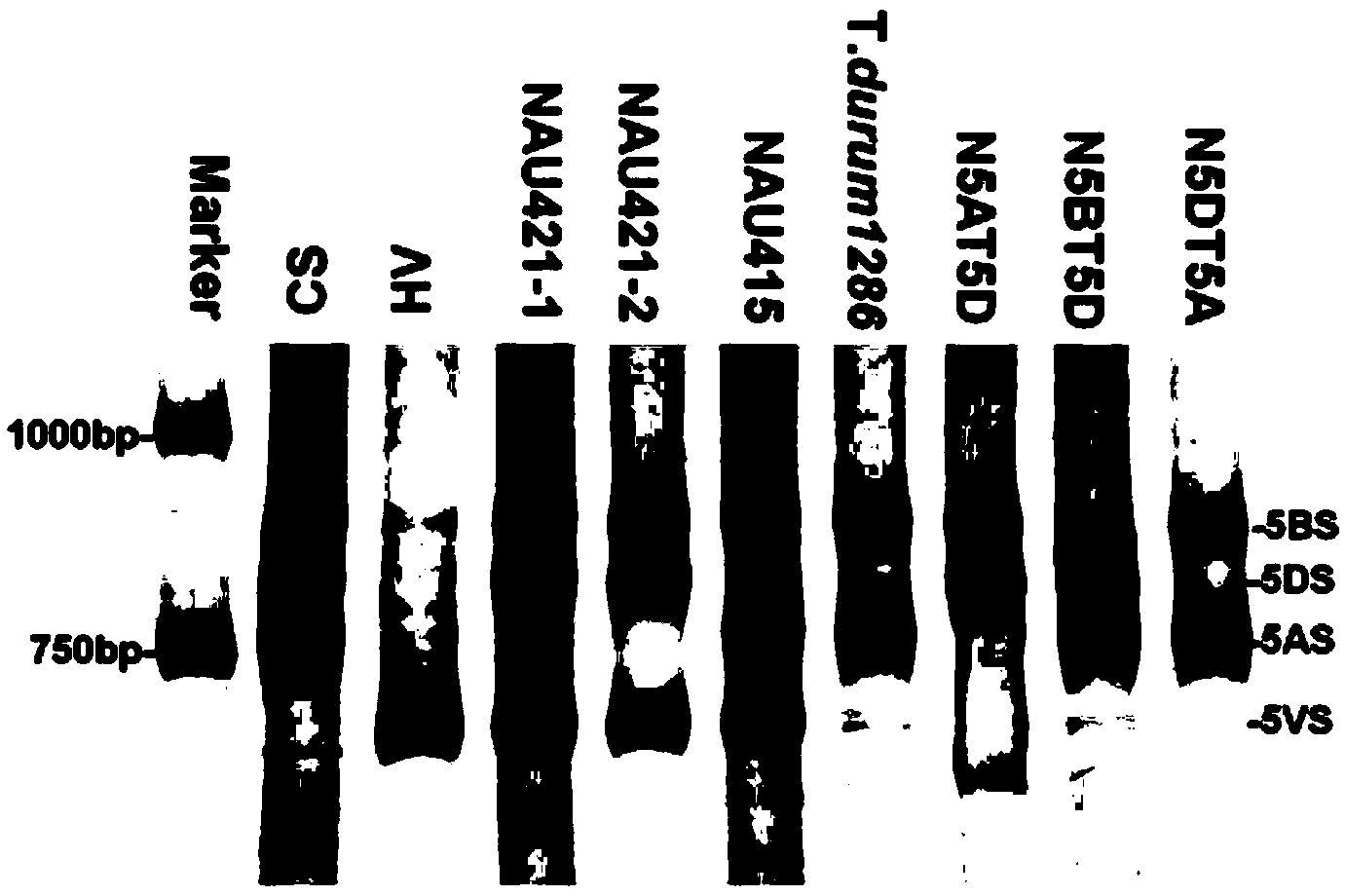Breeding and identifying method of soft and powdery mildew resistant triticum aestivum-Dasypyrum villosum translocation line
A technology for resisting powdery mildew and villous wheat, which is applied in the fields of botanical equipment and methods, microbe measurement/inspection, biochemical equipment and methods, etc., and can solve problems such as loss of resistance
- Summary
- Abstract
- Description
- Claims
- Application Information
AI Technical Summary
Problems solved by technology
Method used
Image
Examples
Embodiment Construction
[0024] (1) Using the mutants of the control homologous chromosome pairing system to induce the translocation of the 5V chromosome of Trichophyllum villosa and the 5A chromosome of common wheat
[0025] The Chinese spring mutant CSph1bph1b (see references: Gill K S and Gill B S.A DNA fragment mapped with in the submicroscopic deletion of Ph1, a chromosome pairing regulator gene in polyploid wheat.Genetics.1991,129:251-259. Wang Xinwang, Lai Jingru , Chen Lianghong, Liu Guangtian. Molecular identification of the ph1b mutant in Chinese spring. Chinese Agricultural Sciences, 1998,31(5):31-34) and the common wheat-Tumina pilosa 5V allogeneic addition line DA5V (see references: Zhang Wei, Zhang Ruiqi, Feng Yigao, Bie Tongde, Chen Peidu. Distribution of highly repeated DNA sequences in Haynaldia villosa and its application in the identification of alien chromatin. Chinese science bulletin, 2013, 58:890–897.) for hybridization, and then CSph1bph1b for hybridization Backcross to get BC...
PUM
 Login to View More
Login to View More Abstract
Description
Claims
Application Information
 Login to View More
Login to View More - R&D
- Intellectual Property
- Life Sciences
- Materials
- Tech Scout
- Unparalleled Data Quality
- Higher Quality Content
- 60% Fewer Hallucinations
Browse by: Latest US Patents, China's latest patents, Technical Efficacy Thesaurus, Application Domain, Technology Topic, Popular Technical Reports.
© 2025 PatSnap. All rights reserved.Legal|Privacy policy|Modern Slavery Act Transparency Statement|Sitemap|About US| Contact US: help@patsnap.com



